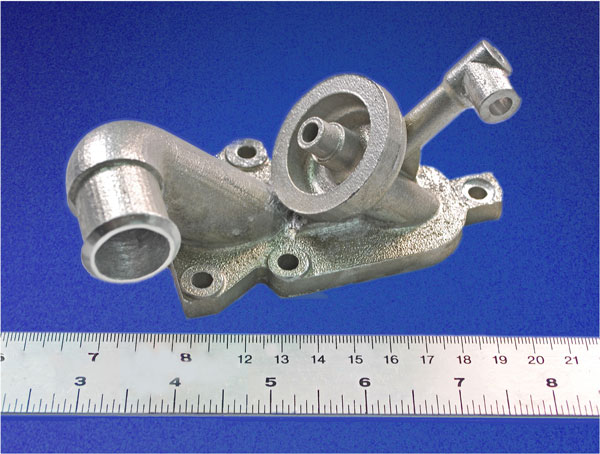In a joint effort, QuesTek Innovations LLC and the German Aerospace Center will explore the full potential of QuesTek’s new printable aluminum (Al) alloy.
QuesTek Innovations LLC, a leading developer of metal alloys, announced that it has developed the new aluminum alloy for additive manufacturing. This alloy is capable of high-strength performance at elevated temperatures (200-300°C) in the as-built condition. It is believed to be the first powdered AI material to meet those requirements without the need for subsequent heat treatment. The new alloy will enable the printing of lighter-weight precision components not currently possible with traditional manufacturing methods. Examples include heat exchangers or other components requiring internal cooling channels, where such features are not viable to obtain via machining. Because of the high-temperature strength of printed components using QuesTek’s new alloy, it will also be possible to reduce weight in parts that currently must be made from titanium.
The new Al alloy was developed using QuesTek’s proven Integrated Computational Materials Engineering (ICME) technologies and Materials by Design® approach, which combines the company’s computational technology with an exclusive stage-gate design and development process. As a global leader in the practical application of ICME, QuesTek focuses on the rapid design and development of materials, from a conceptual need through product insertion.

In an effort to explore the full potential of QuesTek’s printable Al alloy, the company will be collaborating with the prestigious German Aerospace Center (Deutsches Zentrum für Luft-und Raumfahrt, “DLR”). The DLR will print demonstration components of its design for aeronautics and space applications, and prepare a performance brief for European aerospace manufacturers.
Commenting on the development, Greg Olson, QuesTek chief science officer said, “The accelerated design and development of a printable aluminum alloy capable of meeting so many current needs is especially exciting, as it will enable concurrent design of material composition and component geometry. Based on our internal test results, we see broad application of this material in manufacturing components for aerospace, satellite, automotive and high-performance racing. We are particularly pleased to be collaborating with the DLR. Their unrivaled reputation, expertise, and close relationship with industry needs will bring an important new scope to our efforts.”
Heinz Voggenreiter, director of the Institute of Materials Research for the DLR, said, “For additive manufacturing to become a production technology with the capacity to produce components capable of performing in high temperature, high-stress applications, new extraordinary printable alloys will be needed. The German Aerospace Center, with its decades of experience in the development of materials and structures for space and aeronautics, is an ideal cooperation partner for QuesTek to explore intended applications.”
This new high-temperature Al alloy is one of a series of Al alloys for additive manufacturing QuesTek is developing, under multiple U.S. Navy-funded Small Business Innovation Research awards. Other Al alloys under development by QuesTek include a high strength at-room-temperature variant, as well as high strength and highly corrosion-resistant variant. QuesTek is also collaborating closely on high-temperature Al additive manufacturing alloys for engine applications with Pankl Racing, an Austrian-based manufacturer known for advanced production technologies and high-performance components.
More info: www.questek.com
























